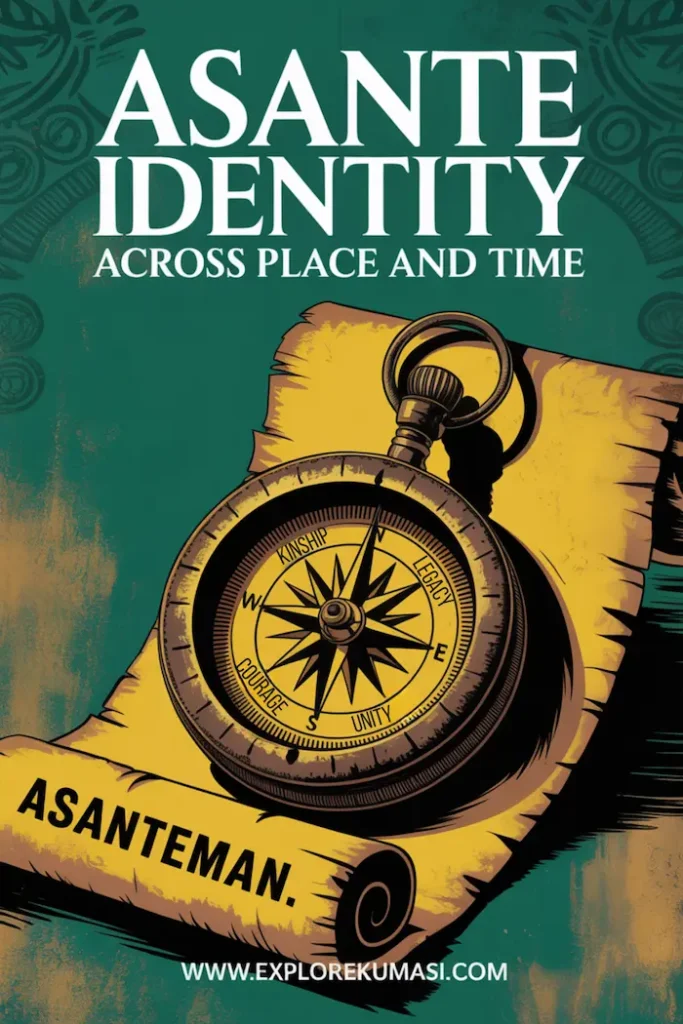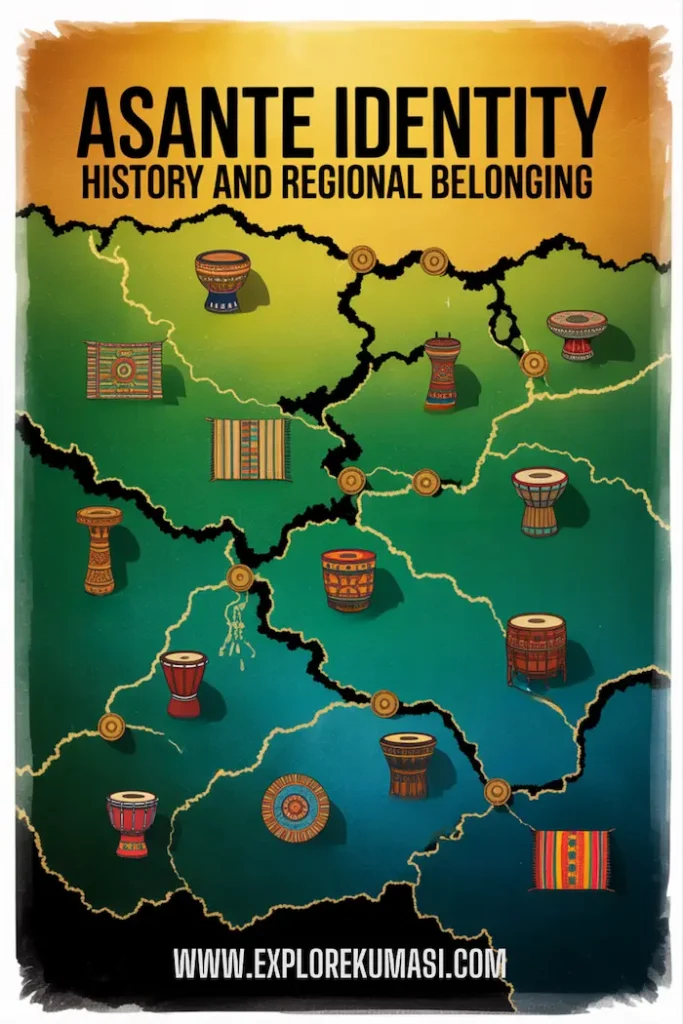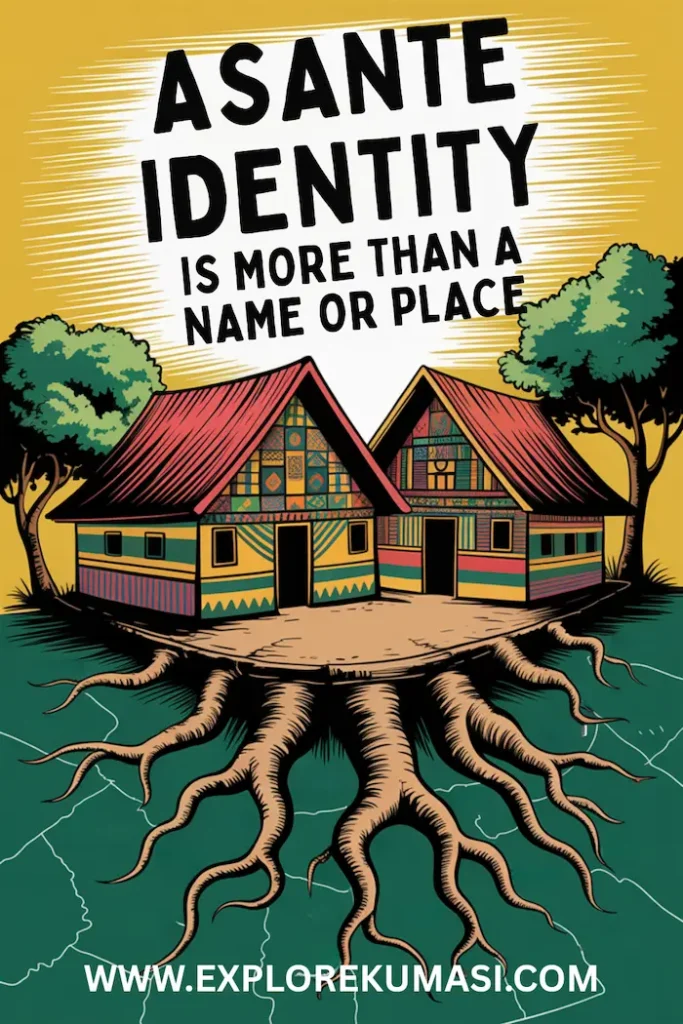Where Asantes Live Today: A Clear Look at Identity and Regional History
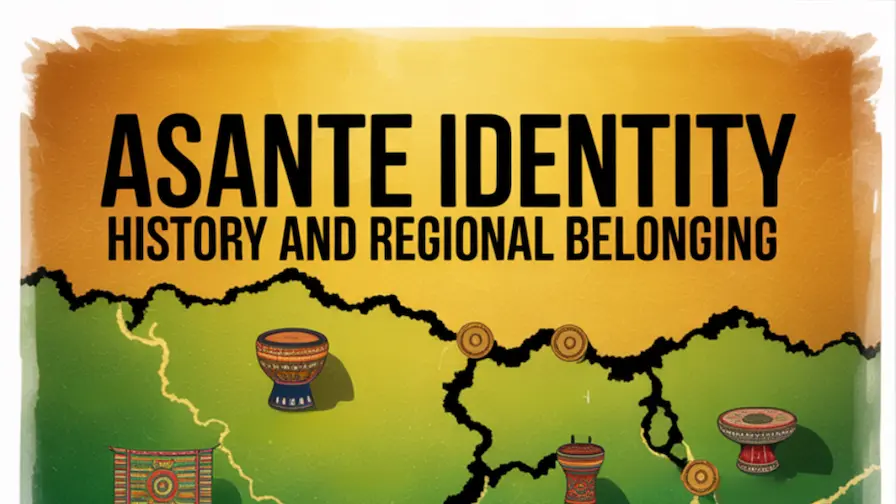
The way Asanteman is mentioned in stories, traditions, and stool connections on ExploreKumasi.com sometimes raises a question for readers.
People start to wonder whether towns like Berekum, Tanoso, or even Koforidua are part of the Asante Kingdom (Asanteman).
Some assume that the Asante Kingdom only covered what is now known as the Ashanti Region. Others say its reach went far beyond, including parts of Bono, Ahafo, Eastern, and even Oti Regions.
The truth often depends on stool allegiance, family ties, and how each town defines itself.
Many people want to know which towns are still part of Asanteman today, which ones left, and how regional identity continues to shift.
This post walks through what is still connected, what changed, and how these histories live on.

Struggling to Keep Track of All Your Kumasi Adventures? No worries!
With so much to see, do, and learn in Kumasi, it’s easy for the details to get lost. Want to make the most of your explorations? Then you need this FREE Kumasi Journal Set!
It’s perfect for recording your favorite spots, and cultural experiences, and even learning key Twi words and phrases to deepen your connection to Kumasi. Whether you’re a local or a visitor, this journal makes every moment count.
Asanteman Historically Included Parts of Bono, Ahafo, and More
The Asante Kingdom was larger than the Ashanti Region we know today. It grew through alliances, wars, and agreements.
At its peak, the kingdom reached into what is now Bono, Bono East, Ahafo, and parts of Eastern and Oti Regions.
The Golden Stool played a big role. When a stool or community swore allegiance to it, they joined Asanteman.
That didn’t mean they gave up everything. Local chiefs still had power, but they recognized the Asantehene’s authority, especially for war, tribute, and spiritual matters.
🟢 Context: Some towns joined Asanteman by choice. Others were added through war or political pressure. With time, a few kept that connection and still take part in Asanteman traditions. Others chose a different path.
Bono History Does Not Begin with Asanteman
Long before the rise of Asanteman, Bono towns already existed. Bono Manso and other early states were part of gold trade routes and had their own leadership.
Asanteman did not form or create the Bono identity. Instead, it expanded into parts of Bono territory and brought several Bono towns into the Asante Union.
Even during Asante rule, many Bono towns kept their own customs. In some places, the connection to Kumasi was more political than cultural.
And when the Ashanti Empire weakened in the late 1800s, several Bono towns moved in new directions.
📍 Note: Saying “there was no Bono before Asanteman” overlooks a rich and older history.
Akan Groups Include More Than Just Asantes
Asante is part of the larger Akan group, but not all Akans are Asantes. Akyem, Akuapem, Fante, Wassa, and others each have their own traditions and royal lineages.
For example, Koforidua is mainly home to Akyem and Akuapem people. While some Asantes have moved there, the town itself doesn’t trace its stool history to Kumasi.
🔁 Note: Other areas, like parts of Oti Region, may have Asante settlers but follow their own local traditions and governance.
Ghana’s Political Boundaries Changed Over Time
The regions we see on a map today don’t always line up with the traditional areas controlled by stools or chiefs. A stool’s influence can cross political borders, depending on its history and customs.
In 1959, the Brong-Ahafo Region was formed from parts of the Ashanti and Northern Regions. In 2019, it was further divided into Bono, Bono East, and Ahafo.
These are administrative regions set by the state. However, many towns still maintain their traditional ties. That includes their relationship with Kumasi and the Golden Stool.
🗺️ Example: A town like Seikwa in the Bono Region may still attend Asanteman Council meetings. This happens because of traditional links, not because of modern regional lines.
The Difference Between “Ashanti” and “Asante”
The word “Asante” is how we say it in Twi, our language. “Ashanti” is the English version introduced during colonial times and still used for the region’s name today.
So:
- “Asantehene” is the correct title for the king (Otumfuo)
- “Asanteman” refers to the Asante nation or union of states
- “Asante Kingdom” describes the traditional structure built around the Golden Stool, led by the Asantehene
- “Asante people” is how we identify ourselves culturally and historically
- “Ashanti Region” is the official name used in Ghana’s political map
Both terms refer to the same group. You’ll likely notice both “Asante” and “Ashanti” used across ExploreKumasi.com, depending on the context.
When discussing people or cultural identity, “Asante” is more commonly used. For regional names or formal references, “Ashanti” may appear instead.
Some Towns Still Recognize the Asantehene Today
There are stools in Bono, Bono East, and parts of Ahafo Region that continue to show allegiance to the Golden Stool.
While not all are listed here, these are examples of towns and areas that maintain traditional ties with Kumasi:
🟡 Bono Region
- Badu
- Seikwa
- Japekrom
- Odumase No.2 (Awua Domase)
⚫ Bono East Region
- Nkoranza
- Tuobodom
- Tanoso
- Offuman
- Techiman (partial historical ties — some internal disputes here)
🟢 Ahafo Region
- Some stools in the Goaso, Kukuom, and Kenkyire areas still respect Kumasi’s traditional authority or attend events, even if they are not formally under the Asantehene.
While many towns in these regions have withdrawn or claimed independence following colonial changes, a few continue to observe Adae rituals, attend meetings at Manhyia, or send representatives to state occasions.
Some of these towns send representatives to the Asanteman Council, bring gifts during festivals, or follow traditional rituals that connect them to the Golden Stool.
Others have stepped away and now operate independently. Both choices are respected under custom.
📝 Did you know? The Asantehene still receives tribute and visits from some of these towns during important events like Adae Kese.
Asante Legacy Within Ghana: Kabonsi in Dagbon
The Asante story isn’t only told in the south or among Akan states. In the Northern Region, Dagbon maintains a quiet yet ongoing connection to Asanteman that dates back to the reign of Poku Ware I in the early 1700s.
As part of peaceful relations, Asante soldiers were sent to support the Gbewaa Palace. Their descendants are known today as the Kabonsi.
These Kabonsi still carry names that resemble Asante naming traditions. For example, one common name is Ochyre, which Asante call Achiri, and another is Adu.
Their customs are also noticeably different from those of the native Dagomba people. Ask around in Yendi, and many locals can point out who the Kabonsi are.
This legacy shows how Asante connections live on, not across borders, but through people, roles, and shared memories.
Asante Roots Continue Beyond Ghana
Some Asante descendants live outside Ghana due to both historical migration and contemporary migration. In the Ivory Coast, the Baoulé people trace their roots to the royal family of Asanteman.
They are descendants of Nana Abena Pokua, a relative of Osei Tutu I, who left Kumasi during a succession dispute.
During the colonial period, Asantehene Prempeh I, Yaa Asantewaa, and others were exiled to the Seychelles after resisting British control. Some of their descendants still live there today.
Asante identity also remains in parts of the Caribbean and the Americas, carried by descendants of those taken during the transatlantic slave trade.
These ties show how cultural memory travels, even when people are far from their homeland.
Enjoying This Post? Keep Exploring With Us!
If this post connects with you, check out our store for fun and interactive ways to explore Kumasi, the Ashanti Kingdom, and the Ashanti Region. From history and culture to beginner-friendly Twi language learning, we’ve created resources to help you learn, connect, and share.

Common Misunderstandings About Asante Identity
Is Bono part of Ashanti Region?
No. Bono is a separate region. But some Bono towns were once part of the Ashanti Kingdom.
Did the Asante create the Bono people?
No. Bono identity and states existed long before Asante expansion.
Do all Bono or Ahafo people see themselves as Asantes?
Not all. It depends on family roots, stool history, and how the town sees itself.
Why do people say places like Tuobodom are “Asante lands”?
Because they were once under Asante rule or aligned with the Golden Stool. Some still maintain that connection.
Is this about owning the land?
No. This is about traditional identity. Land ownership today follows Ghanaian law and customary systems, which may differ.
Regional Identity Is Layered and Still Evolving
Today in Ghana, you might hear someone say they are Bono, Ashanti, or both. Identity can follow family, language, migration, and stool allegiance. What feels true for one household may not be the same for another.
This is part of how tradition lives on. It’s shaped by memory, migration, and how people choose to stay connected.
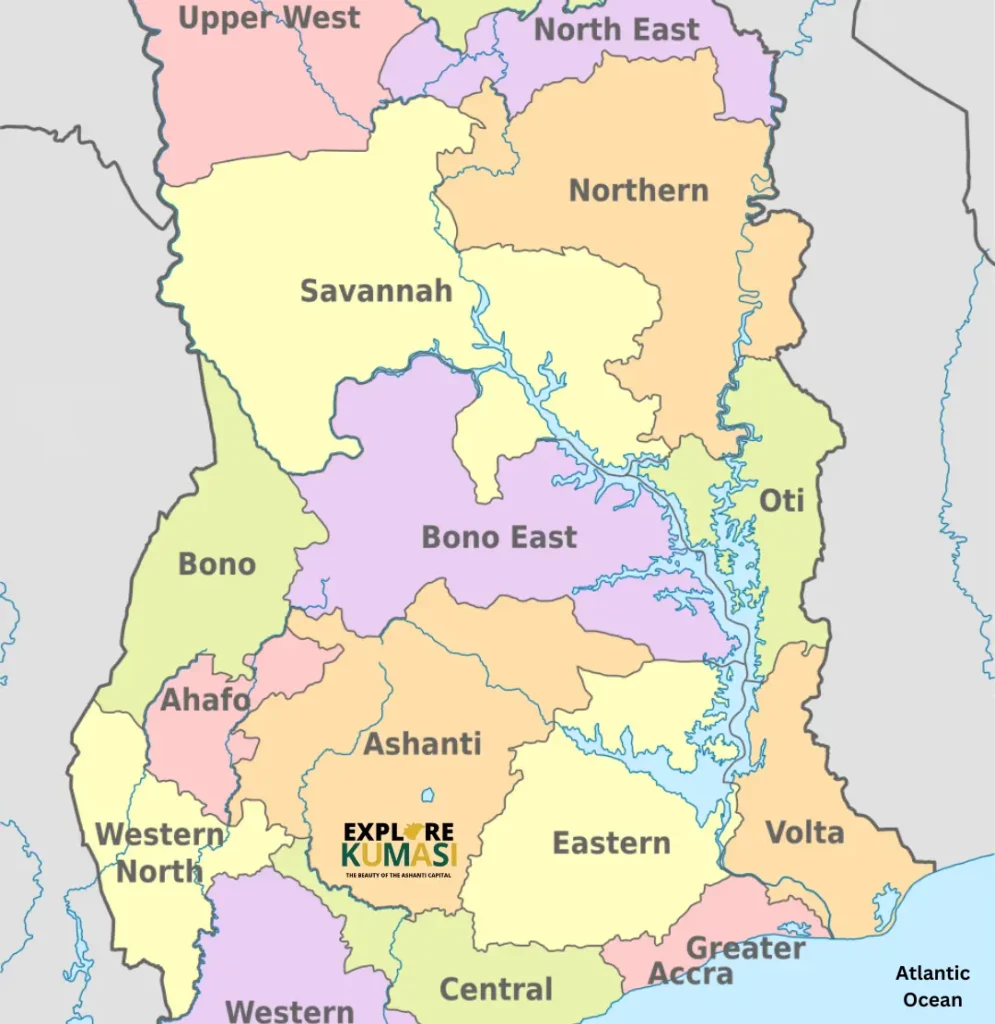
Asanteman once stretched across a wide area. Some towns still honor that connection. Others have walked a different path. That variety is part of Ghana’s cultural landscape.
History includes boundaries, maps, and the ways people connect to their roots today.
Want to learn more about Kumasi’s history and its links to other towns?
Visit ExploreKumasi.com for guides, cultural notes, and helpful breakdowns.
Which town are you from? Does your stool still recognize the Asantehene? Let us know.
AKWAABA!! IF THIS POST CAPTURED YOUR ATTENTION, KEEP EXPLORING KUMASI WITH US AT ExploreKumasi.com. Yɛdaase!
You’ll find cultural guides, historical insights, and travel resources to help you experience Kumasi and the Ashanti Region more deeply.
💬 Want to stay connected? Join our community on Facebook to share your thoughts and discoveries.
📌 Inspired by what you read? Pin an image to come back later or share with someone planning their own Kumasi journey.
Thank you for exploring with us.
